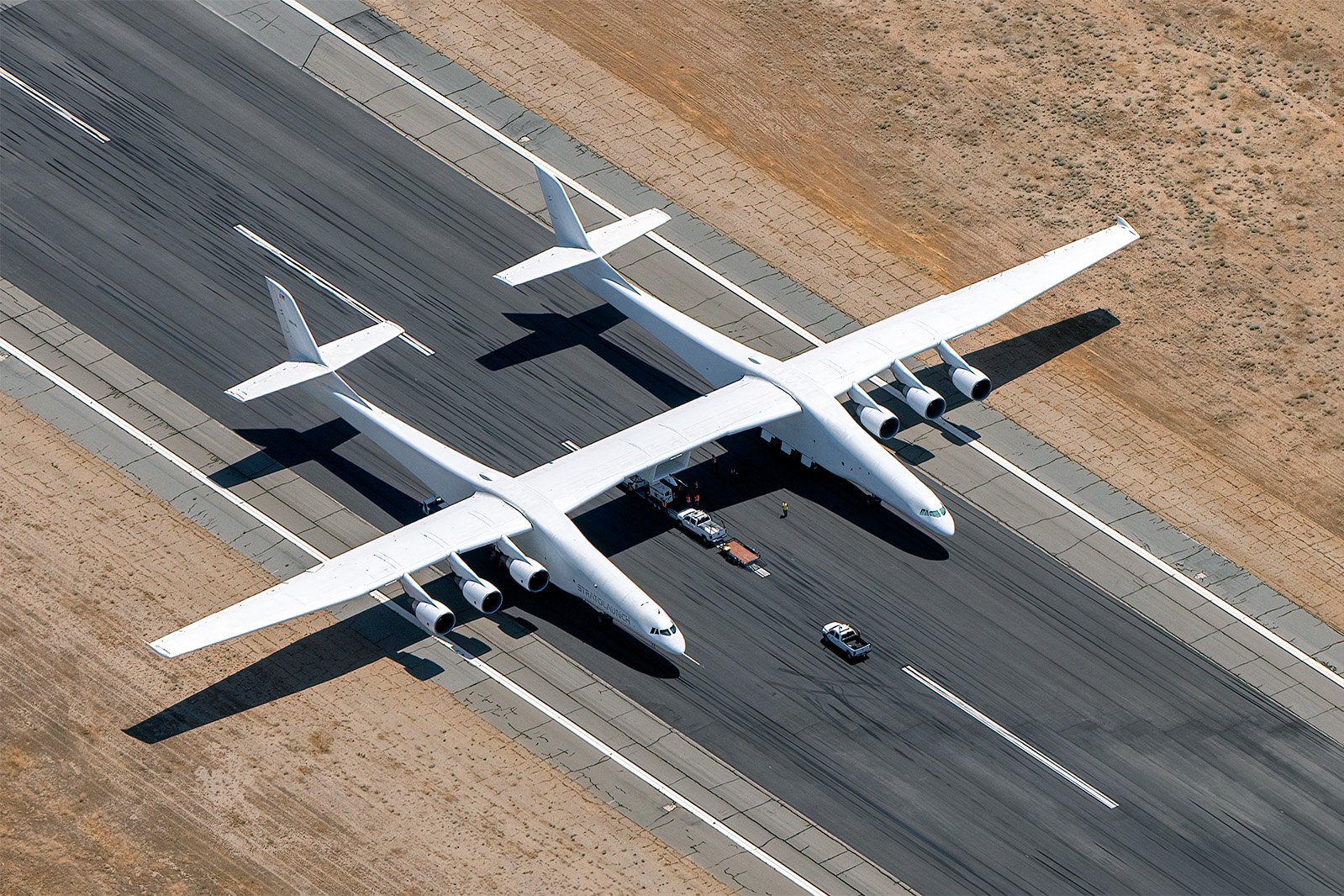
Stratolaunch Roc, the world’s largest airplane, has made history at the Mojave Air and Space Port in California's Mojave Desert. Known simply as ‘Roc,’ it pushes the boundaries of aerospace engineering and hypersonic flight.
Unveiling Roc at Mojave Air and Space Port
The Scaled Composites Model 351 Stratolaunch, also known as ‘Roc,’ was first unveiled at the Mojave Air and Space Port, a hub for world-class aerospace vehicles. Constructed in an enormous 88,000-square-foot hangar, Stratolaunch carrier aircraft emerged as a gargantuan testament to aerospace engineering. With a wingspan of 385 feet and twin fuselages measuring 238 feet in length, Roc took the title of the largest plane ever built.
Roc symbolized a leap forward in aircraft design, promising safer air launch releases and unprecedented payload capacities. From its twin fuselages to its impressive landing gear, every aspect of Roc was a marvel of modern engineering, setting the stage for its impressive future achievements.

Captured from above, the Stratolaunch Roc showcases its immense size and aeronautical innovation at the Mojave Air & Space Port.
Ground Testing at the Mojave Air & Space Port
Before Roc took to the skies, it underwent rigorous ground testing at the Mojave Air and Space Port. Engine runs and taxi tests were part of the ground tests, playing a pivotal role in confirming the aircraft’s flight readiness. On May 31, 2017, Stratolaunch rolled out of its hangar for the first time, marking a significant milestone in its development. During this period, the aircraft underwent fueling tests and rigorous checks of the fire detection systems, ensuring that all systems were operational and safe.
One of the most critical moments was when Roc’s full weight rested on its 28 wheels for the first time, after removing the fabrication infrastructure and scaffolding, particularly the two nose gear wheels on each side, which were specifically designed to support its substantial weight. The ground tests aimed not only at inspecting the systems, but also ensuring the safety of pilots, crew, and staff. Given the aircraft’s first-of-its-kind nature, safety was paramount during every phase of testing.
The comprehensive ground testing at Mojave underscored the meticulous planning and execution required to bring such a massive and innovative aircraft to life. Each test was a step closer to realizing the dream of hypersonic flight and routine access to space.
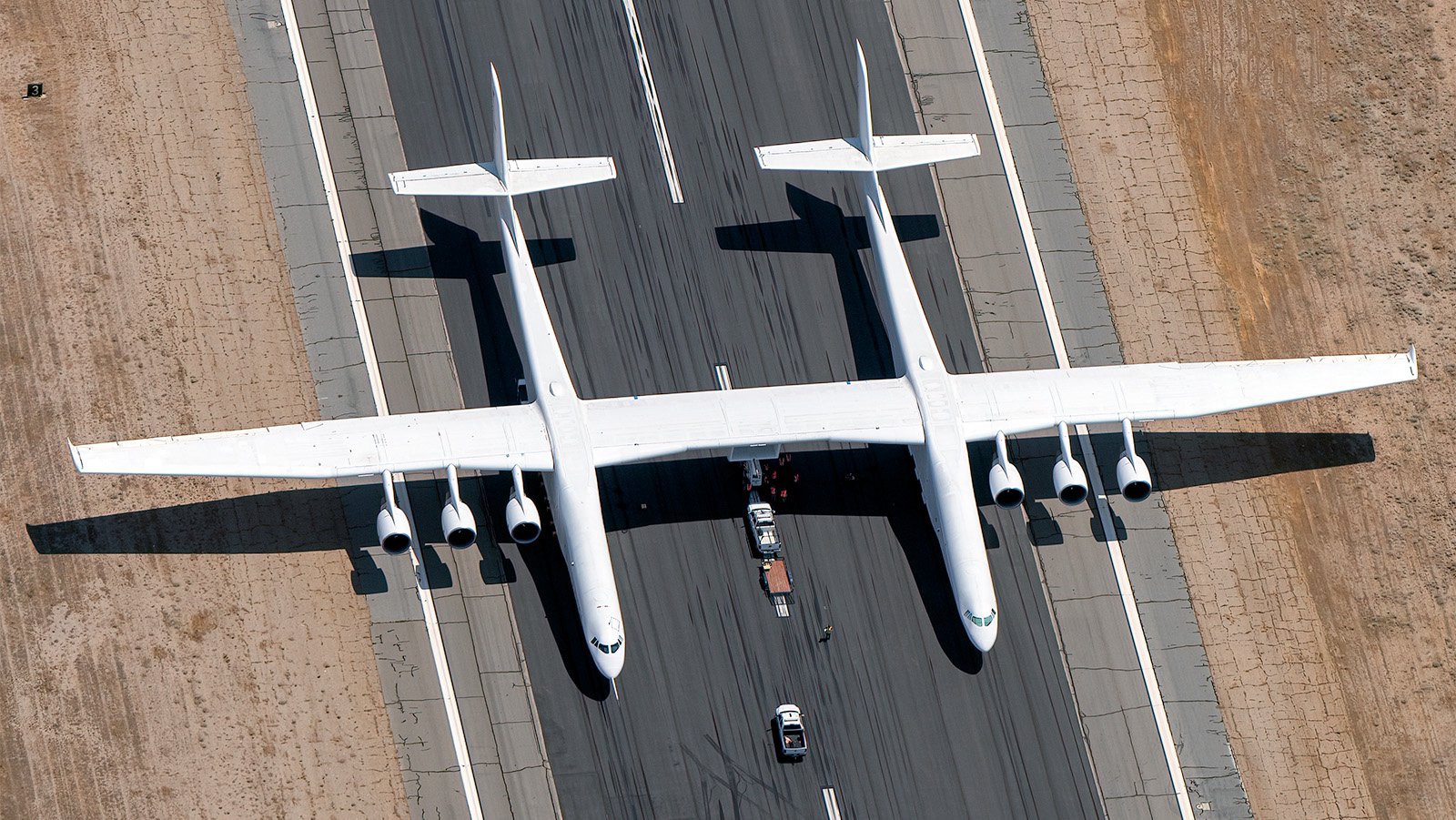
An aerial view of the Stratolaunch Roc with engineers working underneath, preparing for the next groundbreaking flight.
First Powered Flight Over the Mojave Desert
On April 13, 2019, the Stratolaunch Roc embarked on its first flight over California’s Mojave Desert. This maiden flight marked a crucial milestone, as the aircraft flew for two and a half hours, reaching a top speed of 189 mph and an altitude of 17,000 feet. During this test flight, the pilots performed a series of maneuvers, including roll doublets, yawing, pushovers, pull-ups, and side slips to calibrate speed and test flight control systems. The flight also included simulated landing approaches at an altitude of 15,000 feet, showcasing the aircraft’s versatility and control.
Stratolaunch’s CEO, Jean Floyd, commended this achievement as a phenomenal breakthrough. He emphasized that Roc provides a flexible alternative to ground-launched systems, potentially revolutionizing how we approach hypersonic flight and reusable flight technology.
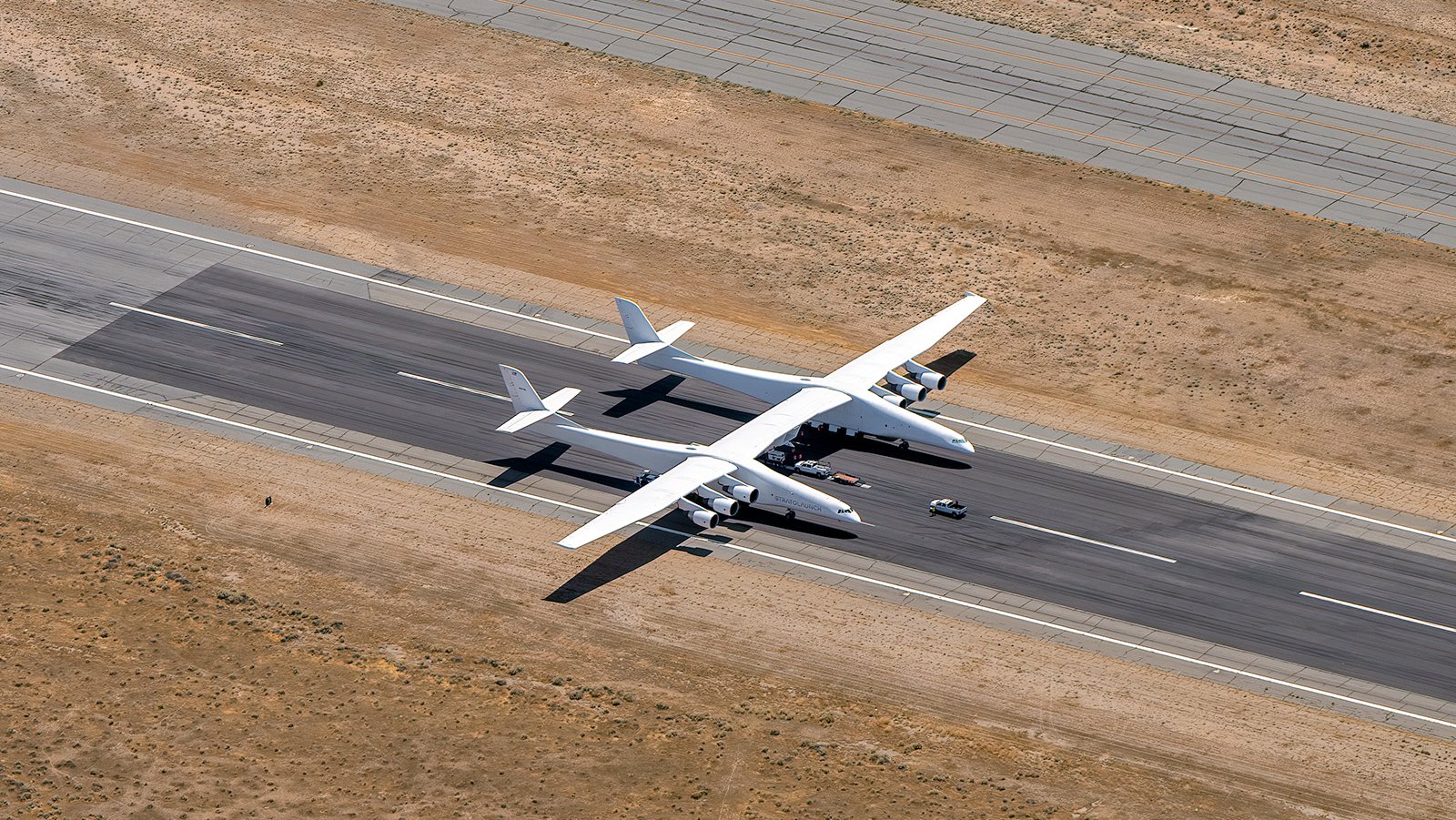
An aerial view of Stratolaunch Roc, the world’s largest aircraft by wingspan, stationed on the expansive tarmac of the Mojave Air & Space Port.
Innovative Design and Engineering
A significant milestone in Stratolaunch’s journey is the development of its hypersonic flight capabilities. The Talon-A test vehicle, TA-1, successfully completed its first powered flight, reaching speeds close to Mach 5. This achievement marks a major step forward in developing reusable hypersonic vehicles, capable of reaching high supersonic speeds and providing invaluable data for future missions.
Stratolaunch is also preparing for the maiden flight of its first fully recoverable Talon-A vehicle, TA-2, expected in the second half of 2024. Taxi testing of the hypersonic flight system, with the Talon-A loaded with live propellant, has been crucial in determining the schedule for this flight. The development costs for these advancements have been substantial, reflecting the significant investment required for such innovative aerospace technology and highlighting Stratolaunch’s dedication to advancing speed technology.
Launching Rockets from the Sky
Beyond being an engineering marvel, Stratolaunch’s Roc aircraft provides a versatile option to conventional ground-launched systems. The dual-fuselage design allows Roc to carry three rockets like the Talon-A1 under its central wing during takeoff. One of the rockets it can carry is the Pegasus XL, built by Orbital ATK. Once at a high altitude of over 20,000 feet, the rockets are separated from Roc for a safe air-launch release. This method ensures that the Talon-A1’s rocket engine can ignite and propel the vehicle to hypersonic speeds without the constraints of ground-based launches.
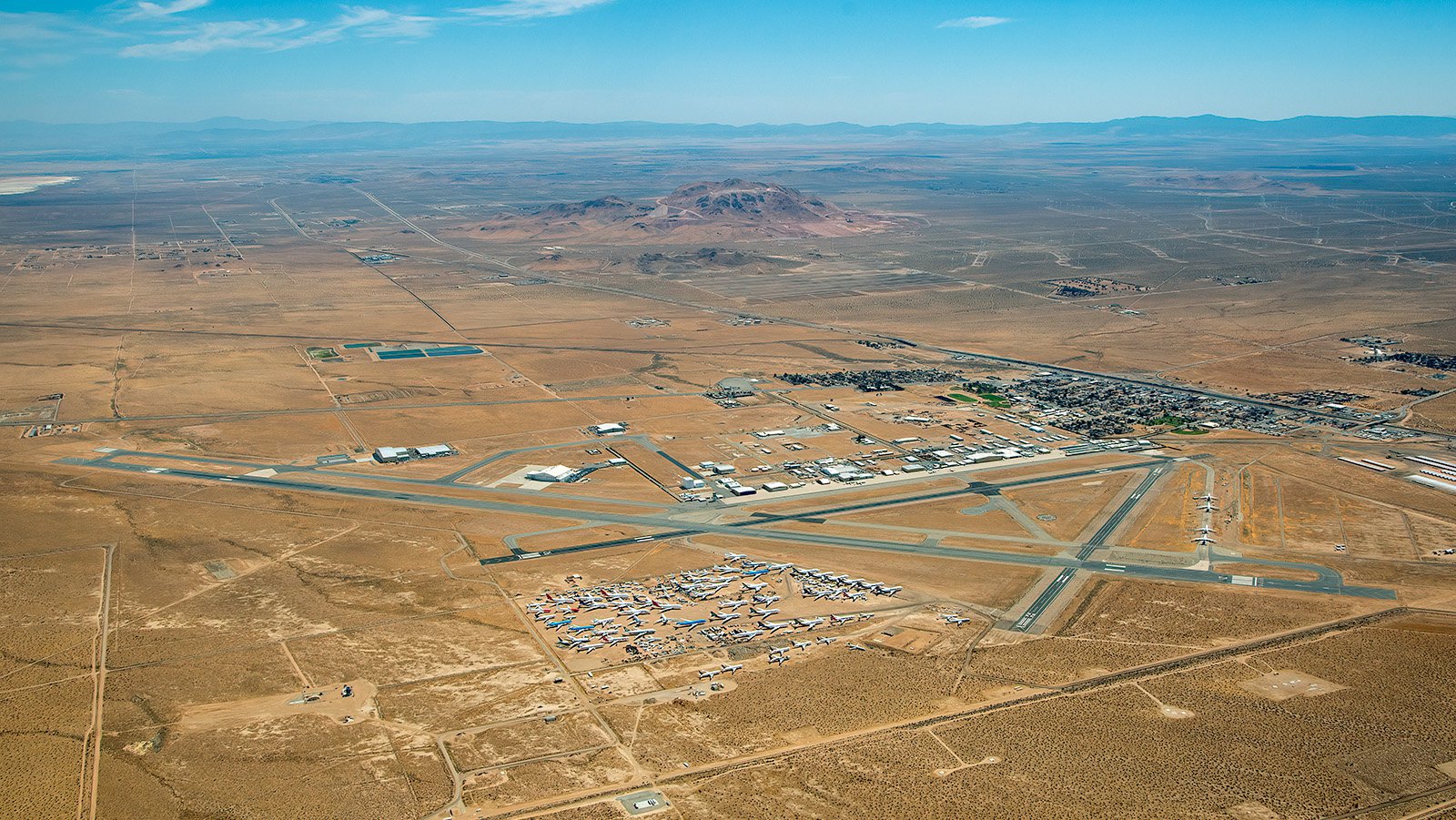
The stark contrast between the concrete infrastructure at Mojave Airport and the natural desert landscape highlights the unique setting of the Air and Space Port facility.
Paul Allen's Vision
The story of Stratolaunch wouldn’t be complete without acknowledging the vision of its founder, Paul Allen. The Microsoft co-founder, along with aerospace designer Burt Rutan, founded Stratolaunch Systems in 2011 with the goal of developing an air-launch-to-orbit system. Allen’s vision extended beyond just launching rockets; he envisioned reusable space planes known as ‘Black Ice’ that could deploy small satellites and conduct experiments.
Paul Allen’s aspirations included:
- Operating Stratolaunch with airport-style, repeatable operations, potentially enabling weekly launches
- Launching satellites for wildlife conservation and monitoring illegal fishing
- Creating a commercial launch service capable of deploying payloads into any orbital inclination from various locations
His forward-thinking leadership remains a source of inspiration for the Stratolaunch team in their pursuit of innovative aerospace solutions. Following Paul Allen's passing, the company transitioned to new ownership, aiming to continue his visionary work.
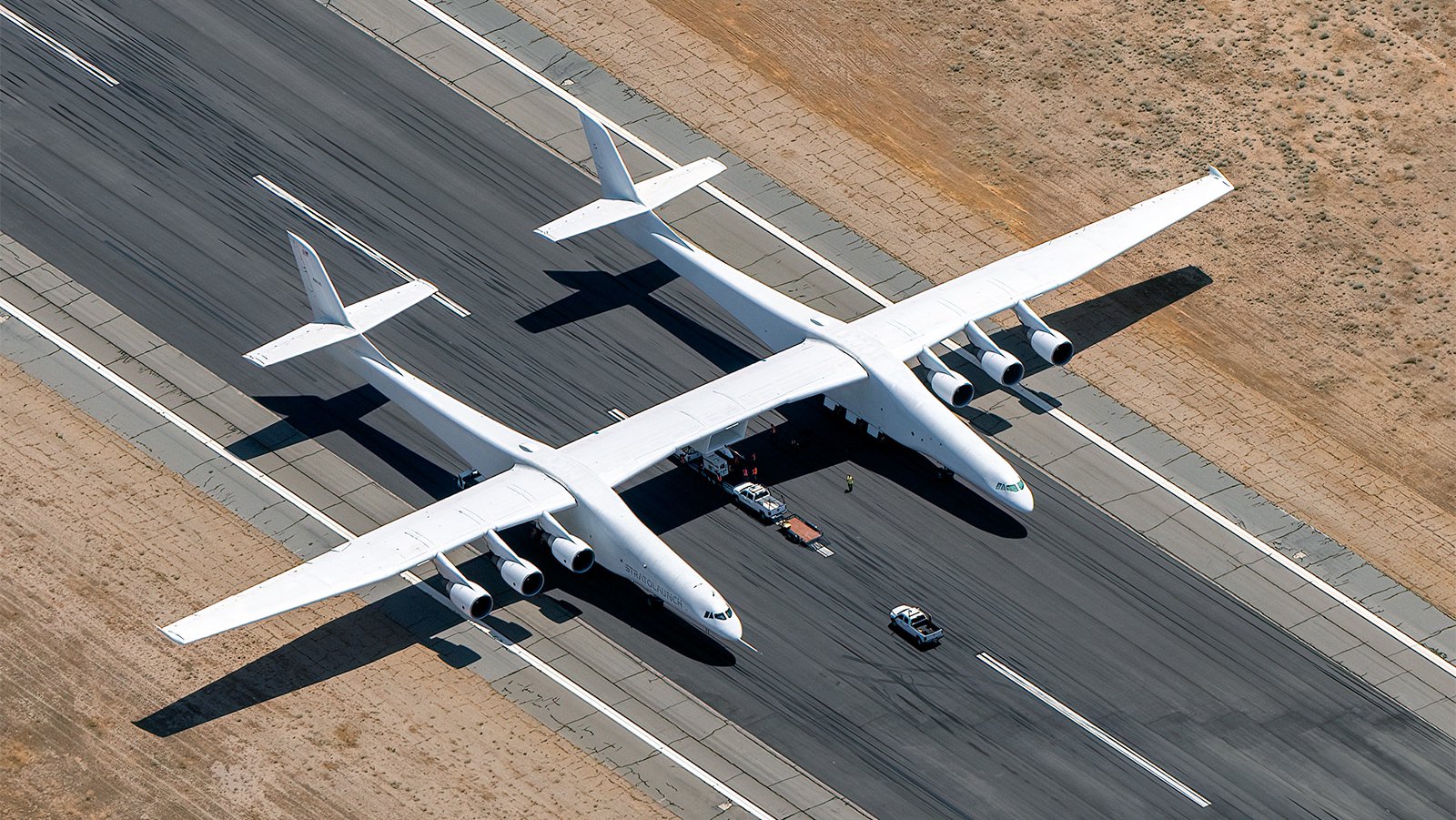
The Stratolaunch Roc stands majestically on the tarmac at Mojave Air & Space Port, dwarfing the crew working beneath.
Future Missions and Objectives
Looking to the future, Stratolaunch’s mission is clear: to become the world's leading provider of high-speed flight test services. A key focus is the development of the Talon-A, a reusable hypersonic test vehicle. The company is also working on TA-3, the second fully reusable vehicle in the Talon-A product line, further emphasizing their commitment to reusable hypersonic technology.
Stratolaunch aims to use data collected from the Talon-A test flights to refine their technology and plan for TA-2’s first reusable flight. By achieving high supersonic speeds and collecting valuable data, Stratolaunch seeks to deliver maximum value to their customers. Their long-term vision encompasses not just the launching of satellites and experiments, but also the prospect of transporting humans into space.
The future indeed looks bright for Stratolaunch as they continue to innovate and push the boundaries of aerospace engineering.
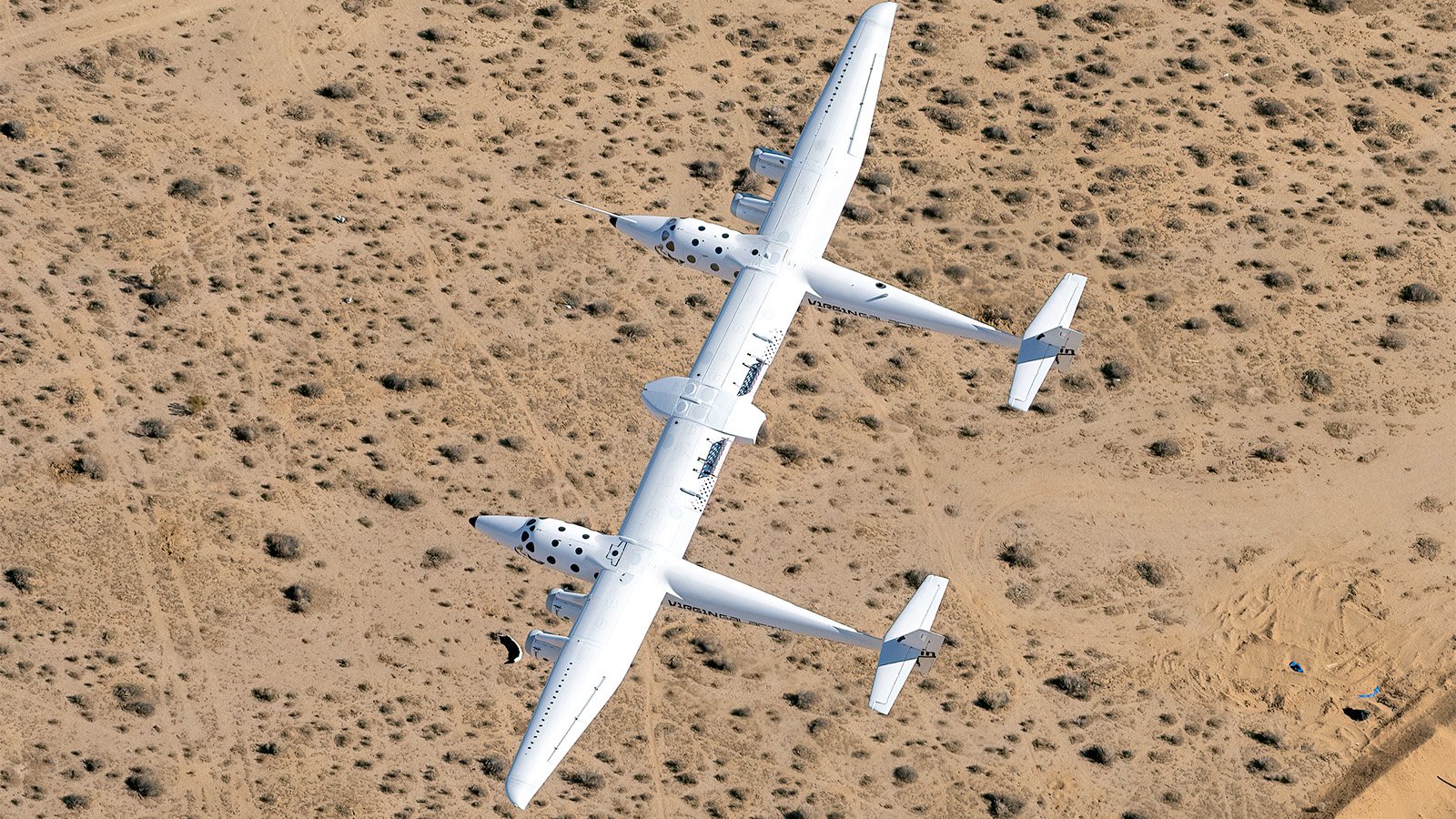
The White Knight Two aircraft gleams in the sunlight, showcasing its sleek lines and innovative engineering from a bird’s eye perspective.
White Knight Two: Inspiring the Stratolaunch Roc
The design of Stratolaunch Roc was heavily inspired by the White Knight Two, another remarkable aircraft developed by Scaled Composites. The White Knight Two, revealed in 2008, was designed with “open architecture” for multipurpose use, including launching the SpaceShipTwo spacecraft. This quadjet cargo aircraft could also handle high-altitude testing and microgravity science flights.

Aerial view of White Knight Two and Virgin Orbit plane side by side at the Mojave Air & Space Port.
White Knight Two’s twin fuselage design and four jet engines provided the blueprint for Stratolaunch Roc’s design. Virgin Galactic contracted Burt Rutan to build White Knight Two, which played a pivotal role in the development of Stratolaunch. White Knight Two’s legacy persists in shaping the innovative design and capabilities of the Stratolaunch Roc, reflecting the progress of aerospace engineering.

A sweeping aerial view showcasing the expansive layout of Mojave Air & Space Port in the heart of the Mojave Desert.
Mojave Air and Space Port
Mojave Air and Space Port serves not only as a location, but also as a nexus for innovation and development in the aerospace field. As the first facility in the United States licensed for horizontal launches of reusable spacecraft, Mojave Airport has been at the forefront of flight testing and space industry advancements since the early 1970s. Its proximity to Edwards Air Force Base and vast, unpopulated areas make it ideal for testing cutting-edge aerospace vehicles.
Mojave Air & Space Port is home to several key players in the aerospace industry, including the National Test Pilot School, Scaled Composites, and Virgin Galactic/The Spaceship Company. The spaceport has also been a test site for significant projects like the Ansari X Prize-winning SpaceShipOne. Additionally, Mojave Airport serves as a storage and maintenance facility for commercial airliners, further cementing its role as a critical center for aerospace activity.
The Stratolaunch Roc’s journey is deeply intertwined with the innovative spirit of the Mojave Air and Space Port.
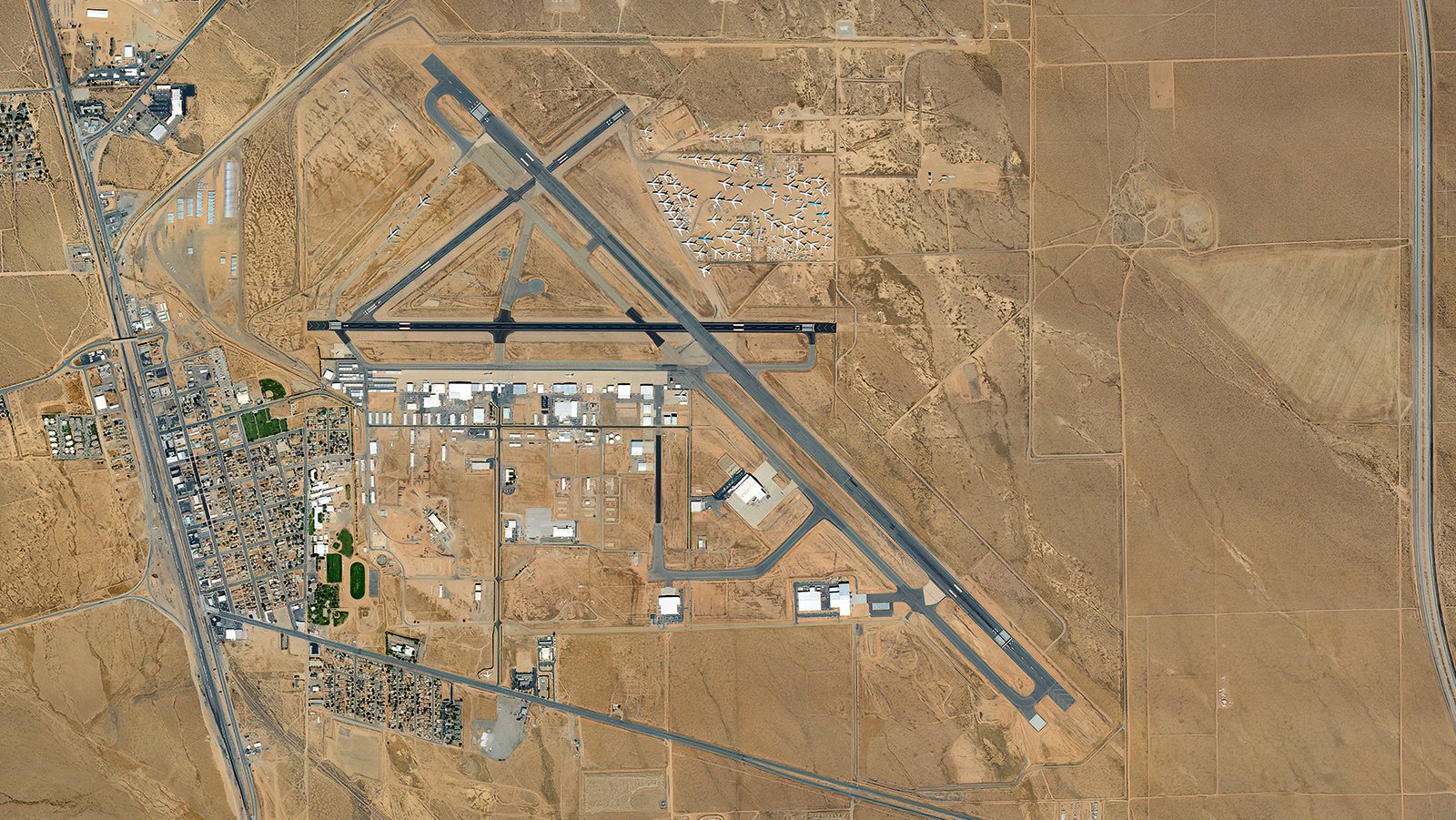
The expansive runways of Mojave Air & Space Port stretch out prominently across the arid desert landscape, providing a perfect location for testing innovative aerospace vehicles. The Stratolaunch Roc alone requires around 12,000 feet of runway for takeoff due to its immense size.
The journey of the Stratolaunch Roc is a testament to human ingenuity and the relentless pursuit of innovation. From its unveiling at the Mojave Air and Space Port to its groundbreaking hypersonic flight capabilities, Roc stands as a beacon of what can be achieved through visionary leadership and cutting-edge engineering. Each milestone, from the first powered flight to the comprehensive ground and test flights, underscores the meticulous planning and execution that have defined Stratolaunch’s journey.